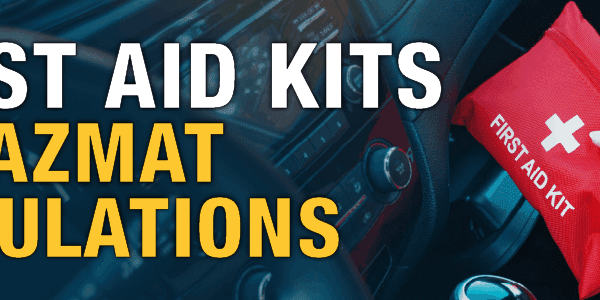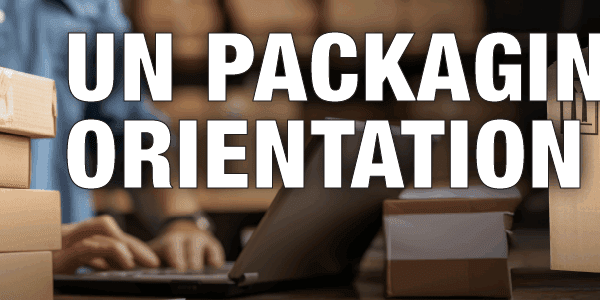
Packaging Requirements for Explosives
Are you getting ready to ship explosives? In addition to classification and applying for a license per our previous article about shipping class 1 explosives, careful attention must be paid to the type of packaging that you choose for your specific explosive.
There are specific regulations that must be followed in both the United States and Canada when choosing compliant UN packaging for your explosives.
United States
In The United States, the packaging section for explosives is located at 173.62 in the 49CFR, which is where you will find Explosives Table 1. In this section you will see 2 columns, one for the UN number, and a packaging instruction beside it. For example, if you are shipping UN 0360 Detonator Assemblies, non-electric, you will see PI 131 next to it. At this point you should visit packing instruction 131, which is located in Table 2. Now it is time to read your packing instruction and see what type of packaging would be compliant to ship your explosives. There are 4 columns total in the example below.
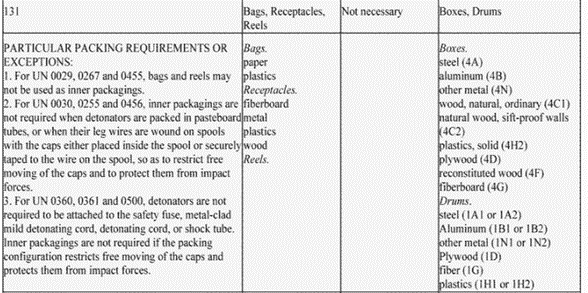
The first column lists the packing methods prescribed for explosives and includes any exceptions that may exist for your specific UN number. The second column specifies the inner packagings that are required. If inner packagings are not required, a notation of “Not necessary” appears in the column. The term “Not necessary” means that a suitable inner packaging may be used but is not required. The third column specifies the intermediate packagings that are required. If intermediate packagings are not required, a notation of “Not necessary” will also appear in this column. The fourth column specifies the outer packagings which are required. If inner packagings and/or intermediate packagings are required in the second and third columns, then the packaging specified in the fourth column must be used as the outer packaging of a combination packaging; otherwise, it may be used as a single packaging. In our example in the table above, the shipper is allowed to use an outer 4G box and an inner packaging can be used as well, but it is not required as long as there is restricted movement inside the box per the exception for UN 0360 in column 1.
Canada
In Canada when shipping explosives we must go to the CGSB-43.151-2019 packaging standard. Here you will find a Table of Explosives, but this one has 7 columns which include the UN number, shipping name, primary hazard class, subsidiary hazard class, special provisions, packing Instructions and packing provisions. In our example above when shipping UN 0360, this standard sends us to Packing Instruction EP 31 per below.
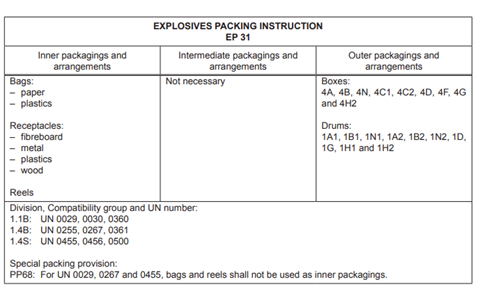
In this case, a 4G box is also allowed, but inner packaging is a requirement, and various bags and receptacles would be compliant options. The main difference here is that in the United States there is an exception that relieves you from using inner packaging and in Canada there is no exception, and it is required.
At ICC, we have a wide variety of 4GV packaging and inner plastic bags which would meet the requirement for packaging the explosive mentioned above as well as others. Take a look at our UN Packaging FAQ or contact our team of experts at 855.734.5469 or send us an email, we’re happy to help.
Stay up to date and sign up for our newsletter!
We have all the products, services and training you need to ensure your staff is properly trained and informed.
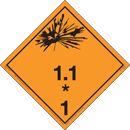 Hazard Class 1 Hazard Class 1Explosive Placards |
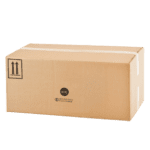 4GV Package 4GV Package |
 Shipping Dangerous Shipping DangerousGoods by Ground |

